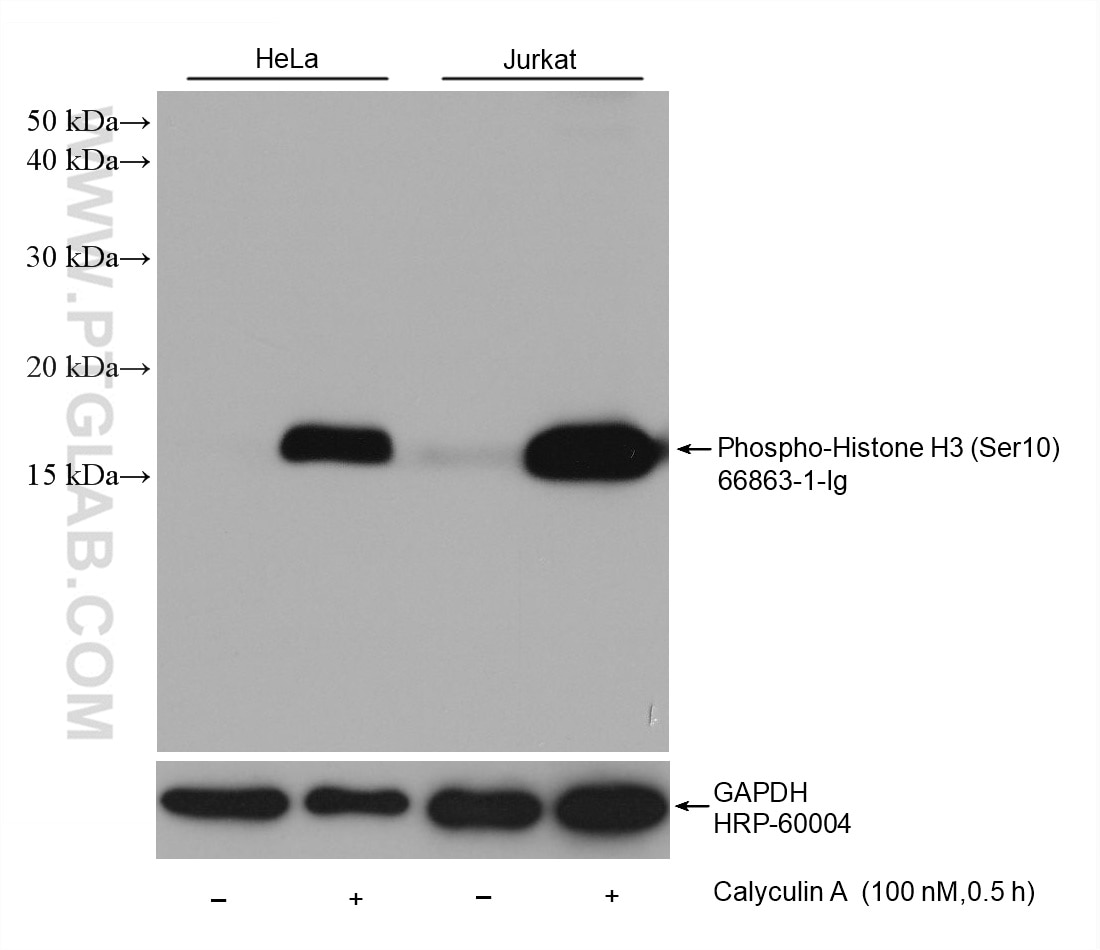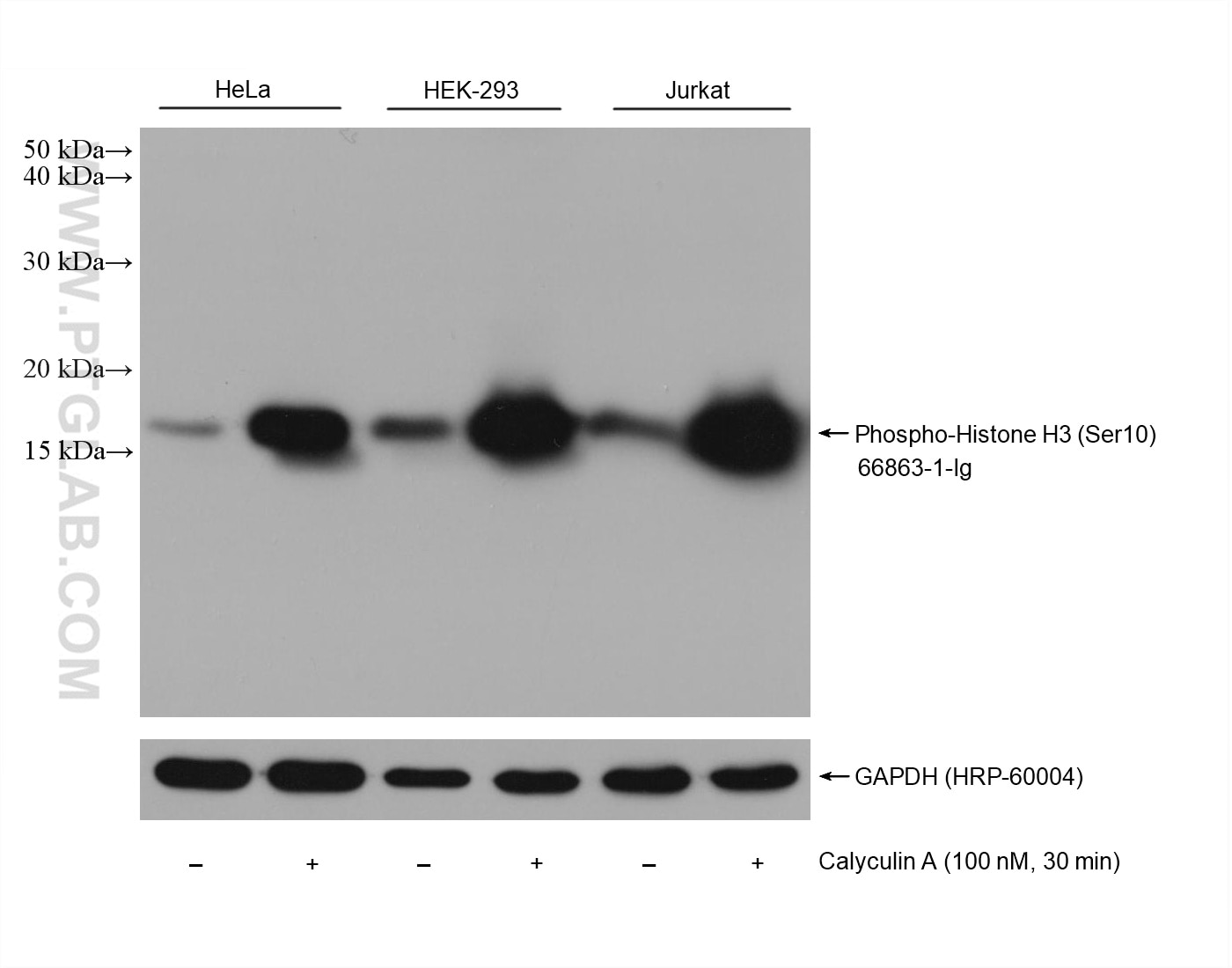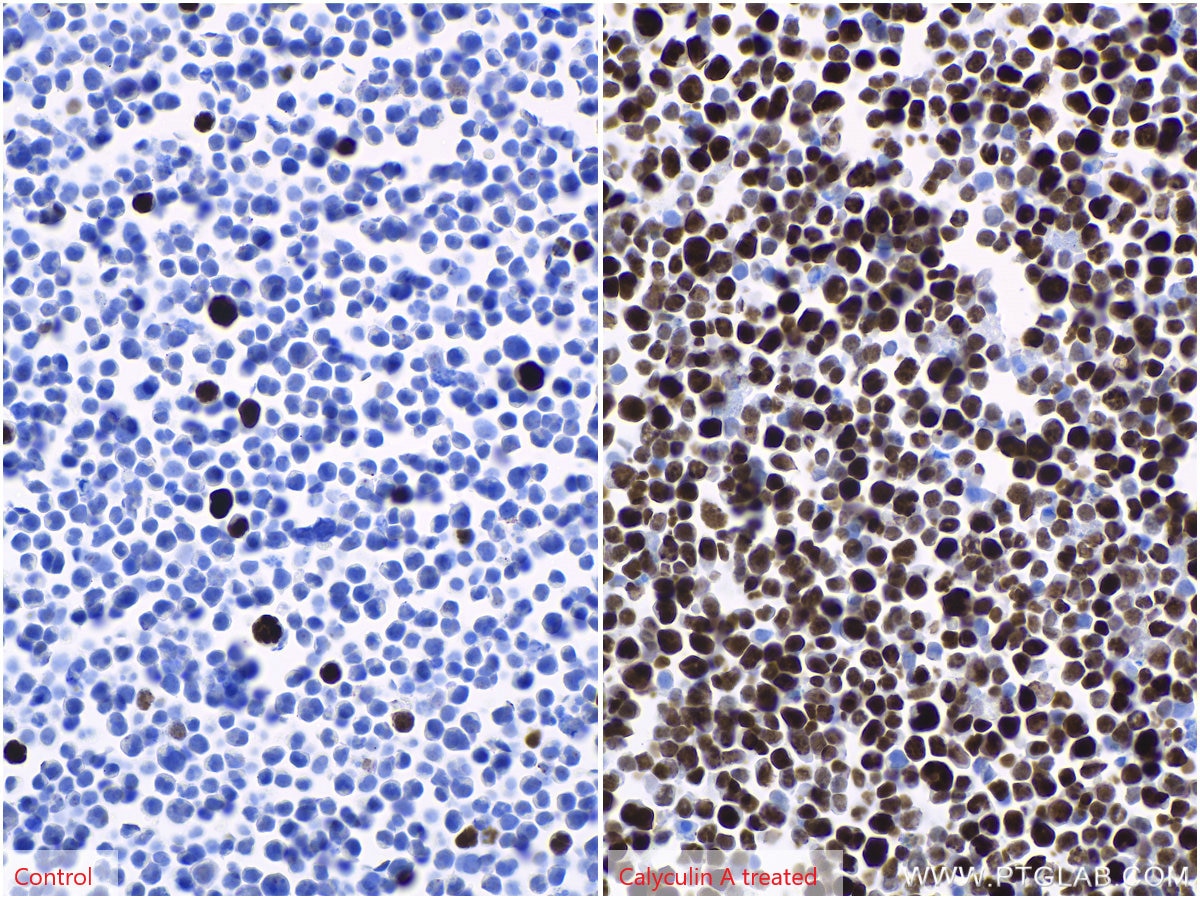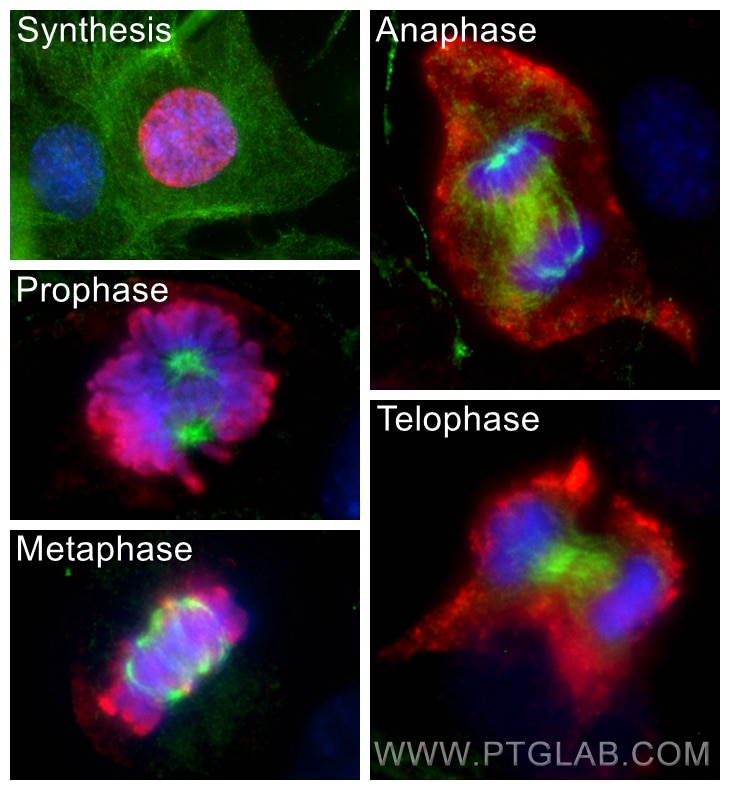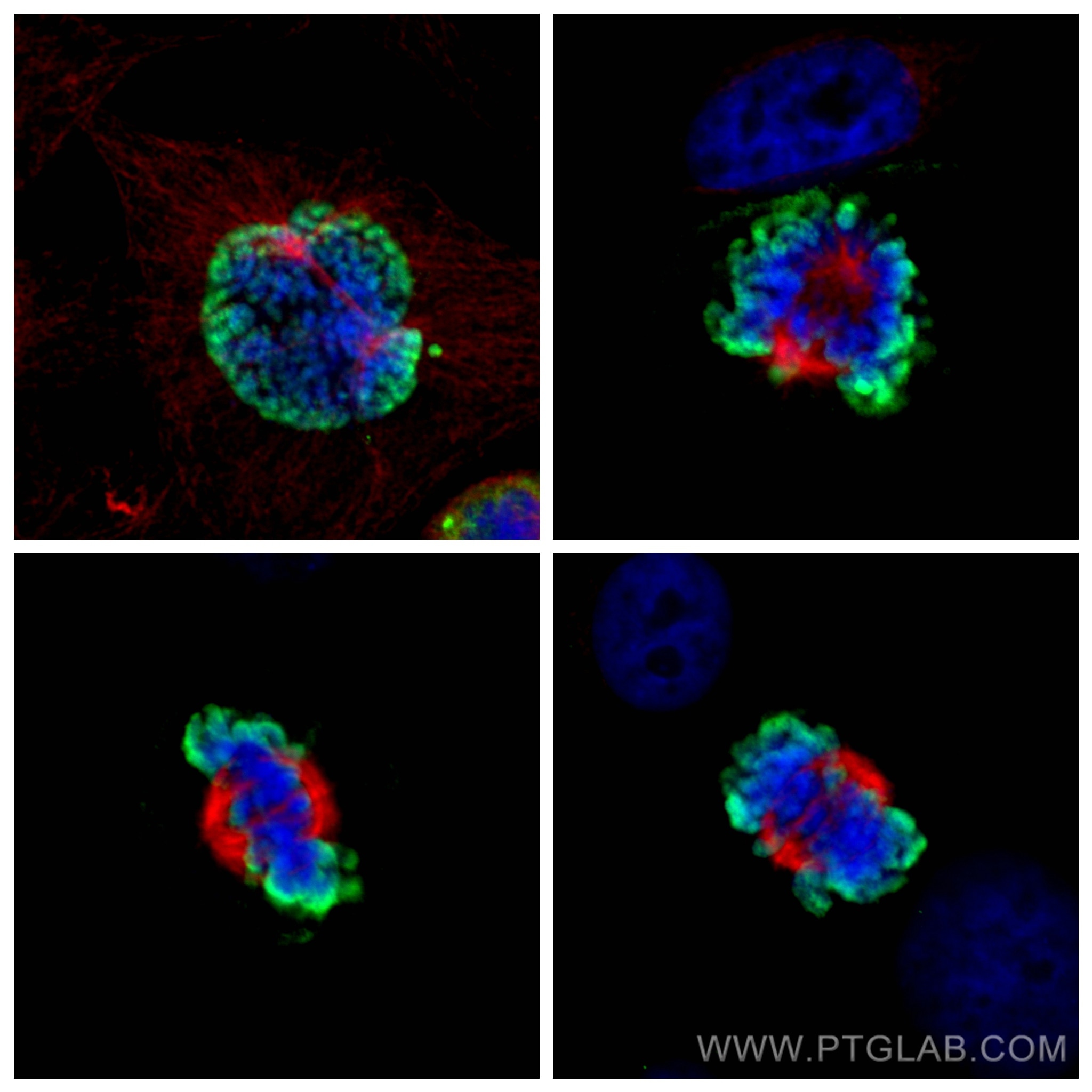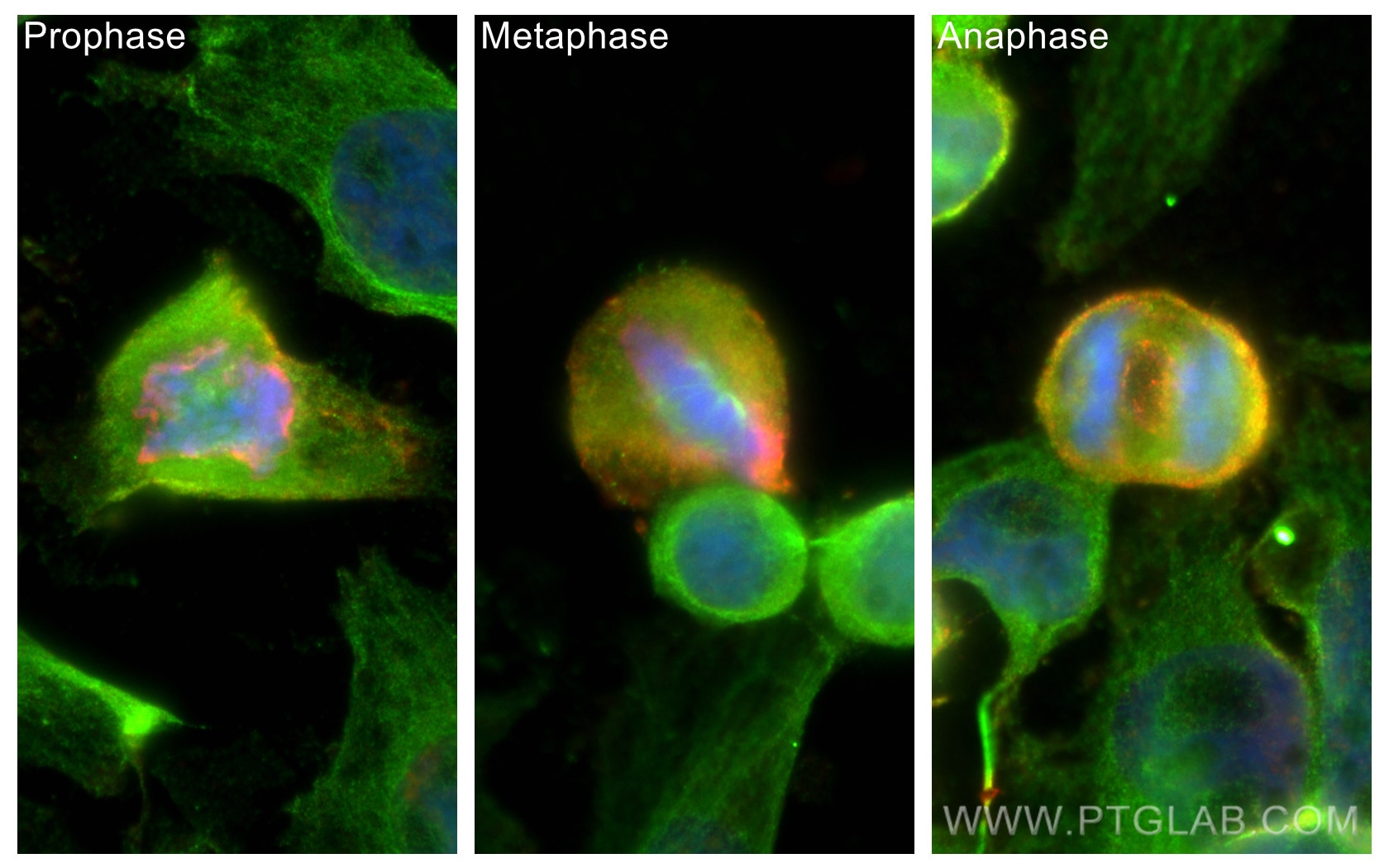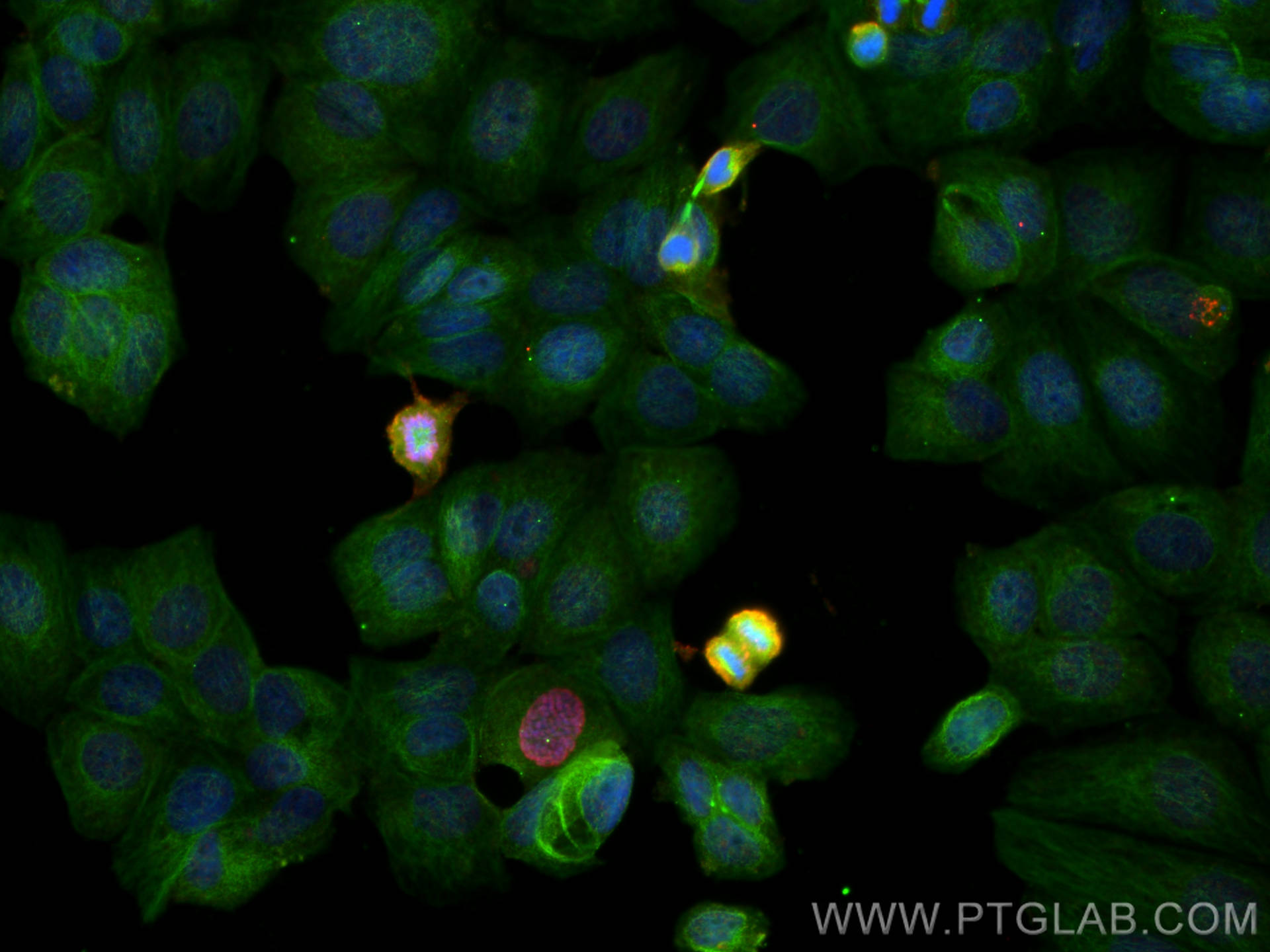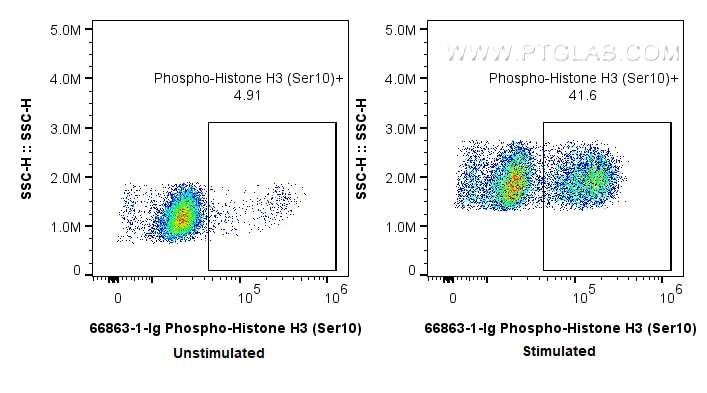Tested Applications
| Positive WB detected in | HeLa cells, HEK-293 cells, Jurkat cells |
| Positive IF/ICC detected in | C2C12 cells, HeLa cells, MCF-7 cells |
| Positive FC (Intra) detected in | nocodazole treated HeLa cells |
Recommended dilution
| Application | Dilution |
|---|---|
| Western Blot (WB) | WB : 1:5000-1:50000 |
| Immunofluorescence (IF)/ICC | IF/ICC : 1:600-1:2400 |
| Flow Cytometry (FC) (INTRA) | FC (INTRA) : 0.25 ug per 10^6 cells in a 100 µl suspension |
| It is recommended that this reagent should be titrated in each testing system to obtain optimal results. | |
| Sample-dependent, Check data in validation data gallery. | |
Published Applications
| WB | See 10 publications below |
| IHC | See 3 publications below |
| IF | See 11 publications below |
Product Information
66863-1-Ig targets Phospho-Histone H3 (Ser10) in WB, IHC, IF/ICC, FC (Intra), ELISA applications and shows reactivity with human samples.
| Tested Reactivity | human |
| Cited Reactivity | human, mouse, rat, chicken |
| Host / Isotype | Mouse / IgG1 |
| Class | Monoclonal |
| Type | Antibody |
| Immunogen |
Peptide Predict reactive species |
| Full Name | histone cluster 1, H3a |
| Calculated Molecular Weight | 15 kDa |
| Observed Molecular Weight | 15-17 kDa |
| GenBank Accession Number | NM_003529 |
| Gene Symbol | HIST1H3A |
| Gene ID (NCBI) | 8350 |
| RRID | AB_2882201 |
| Conjugate | Unconjugated |
| Form | Liquid |
| Purification Method | Protein G purification |
| UNIPROT ID | P68431 |
| Storage Buffer | PBS with 0.02% sodium azide and 50% glycerol, pH 7.3. |
| Storage Conditions | Store at -20°C. Stable for one year after shipment. Aliquoting is unnecessary for -20oC storage. 20ul sizes contain 0.1% BSA. |
Background Information
Phospho-histone-H3 (PHH3) is a core histone protein, which in its phosphorylated state forms the principal constituents of eukaryotic chromatin, with histone H3 being phosphorylated at serine (Ser) 10 or Ser28 as well as its phosphorylation of Ser10 being strongly correlated with the late G2 to M-phase transition in mammalian mitotic cells. On the basis of previous research, a few cell line- and animal model-based researches have displayed an increase in phosphorylation of histone H3 at Ser10 (H3S10ph), the only histone marker that is involved in carcinogenesis and cellular transformation. Histone H3 phosphorylation on serine-10 is specific to mitosis and phosphorylated histone H3 (PHH3) proliferation markers (as counts defined per area or as indices defined per cell numbers) are increasingly being used to evaluate proliferation in various tumors.
Protocols
| Product Specific Protocols | |
|---|---|
| IF protocol for Phospho-Histone H3 (Ser10) antibody 66863-1-Ig | Download protocol |
| IHC protocol for Phospho-Histone H3 (Ser10) antibody 66863-1-Ig | Download protocol |
| WB protocol for Phospho-Histone H3 (Ser10) antibody 66863-1-Ig | Download protocol |
| Standard Protocols | |
|---|---|
| Click here to view our Standard Protocols |
Publications
| Species | Application | Title |
|---|---|---|
Oncogene Oncogenic long intervening noncoding RNA Linc00284 promotes c-Met expression by sponging miR-27a in colorectal cancer. | ||
EMBO Rep Palmitoylated importin α regulates mitotic spindle orientation through interaction with NuMA | ||
iScience Centrosomal protein 120 promotes centrosome amplification and gastric cancer progression via USP54-mediated deubiquitination of PLK4 | ||
Biochem Pharmacol A novel aromatic amide derivative SY-65 co-targeted tubulin and histone deacetylase 1 with potent anticancer activity in vitro and in vivo. | ||
Front Mol Biosci High-Resolution Imaging of Tumor Spheroids and Organoids Enabled by Expansion Microscopy. | ||
Sci Rep NF90-NF45 is essential for β cell compensation under obesity-inducing metabolic stress through suppression of p53 signaling pathway. |
Reviews
The reviews below have been submitted by verified Proteintech customers who received an incentive for providing their feedback.
FH Charlotte (Verified Customer) (09-19-2024) | Blocking and dilution in seablock. Antibody very strong given the dilution and the bands intensity. Very satisfied.
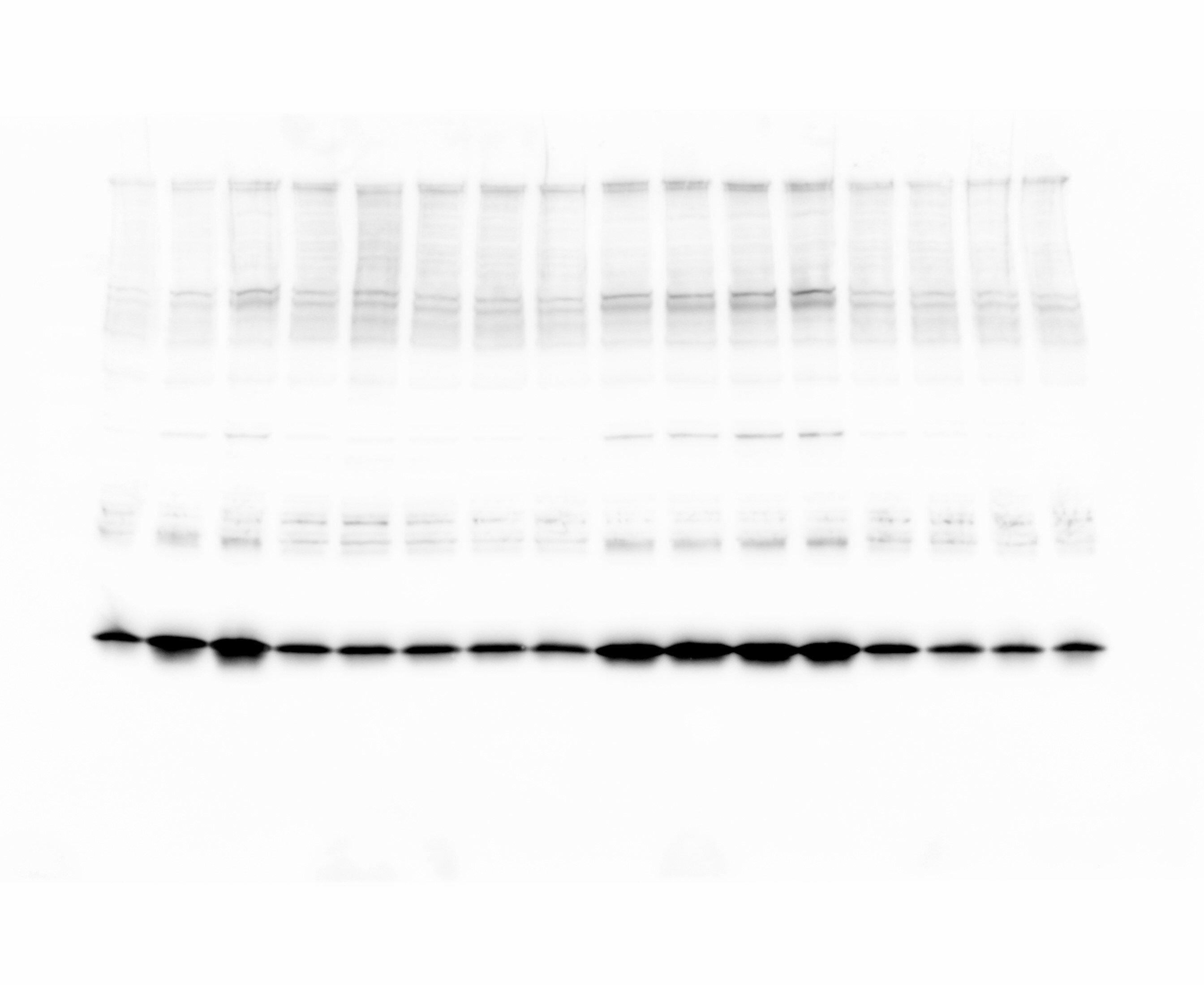 |
FH Tsimafei (Verified Customer) (08-04-2024) | Membrane was incubated at 4C, ON
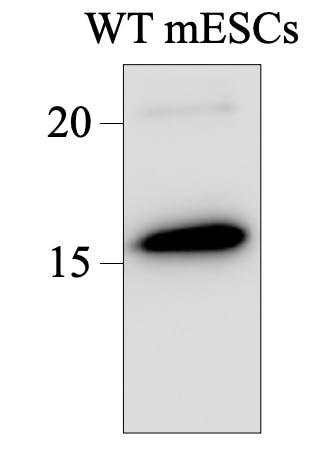 |
FH Wissem (Verified Customer) (06-27-2024) | This antibody works great at detecting phosphorylation of Histone H3 at S10; conditions - 1:10,000 overnight at 4C; used to assess cell cycle synchronisation in n extracts from U2OS, HCT116, HeLa, RPE1 and HEK293 cells
|

